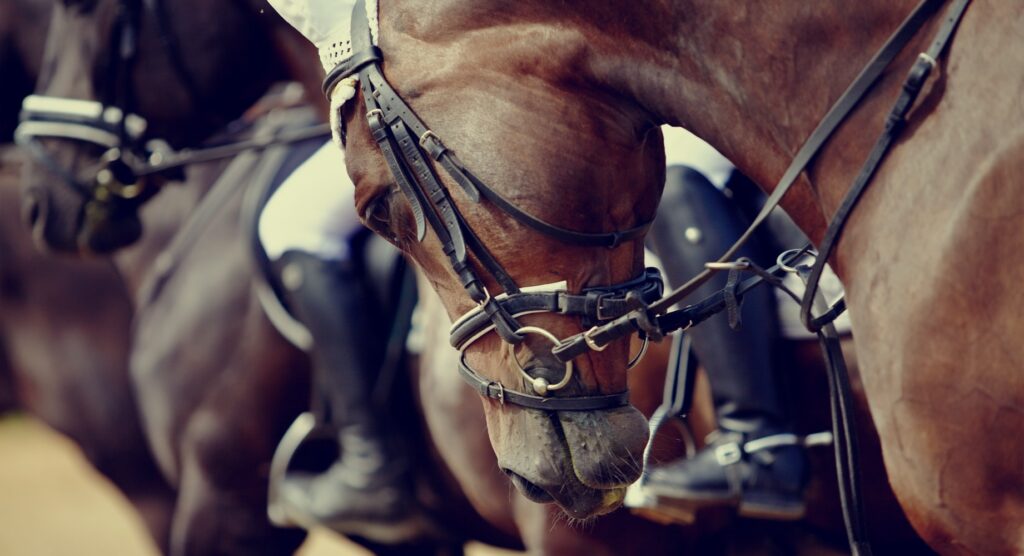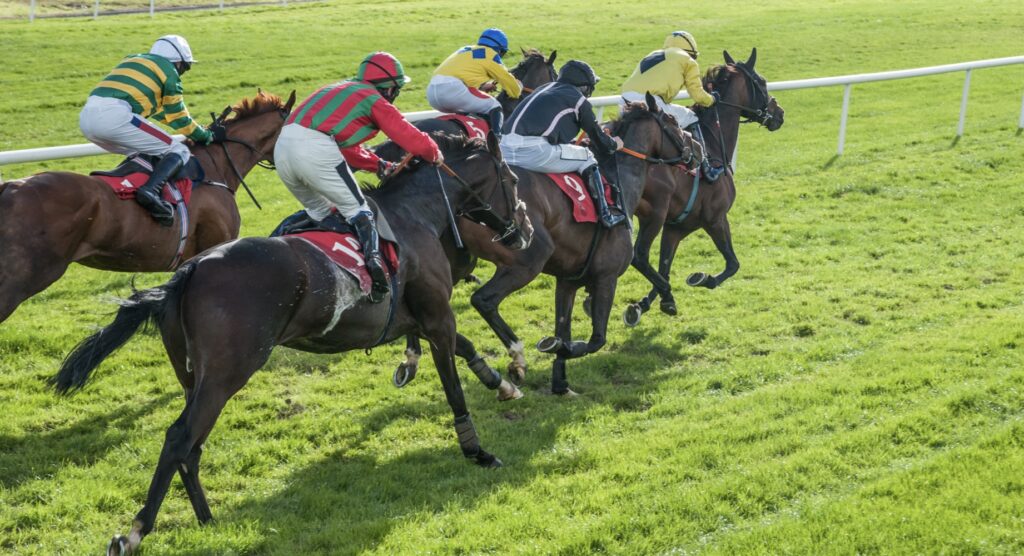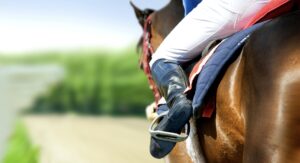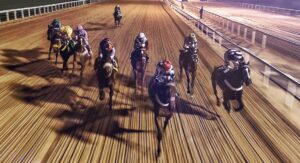Female Gender Bias
In this article we take a look at the assumption of gender bias, identifying whether the theory is as black and white as it is often perceived, whether it is borne out by facts, or whether it is merely a myth, creating value opportunities when backing the fairer sex on the race course.
Introduction
The Spice Girls famously coined the phrase girl power’, and in recent years, we have seen an application of their mantra on the racecourse, with female superstars such as Zenyatta (USA), Quevega (IRE) and Goldikova (FRA) all emerging as top class performers, displaying brilliance when taking on elite competition.
However, despite these superstars success, there is a common perception that the female racehorse is inferior to the male, lacking the size, strength and determination. Let’s see if this perception is true or not.
General Performance
First it is logical to ascertain an overall picture of how the different genders have performed in all mixed race handicaps over the last ten years. The purpose of using handicaps, is that horses are allotted weight based on their perceived ability, not gender or any other factor.
First it is logical to ascertain an overall picture of how the different genders have performed in all mixed race handicaps over the last ten years. The purpose of using handicaps, is that horses are allotted weight based on their perceived ability, not gender or any other factor.
Horses are defined differently based on their age and sex and are typically divided into five categories:
- Horse – An entire male horse, older than 4
- Colt – An entire male horse, 4 or younger
- Gelding – A male who has had his privates removed, usually to help him focus better
- Mare – A female horse, older than 4
- Filly – A female horse, 4 or younger
Flat Runners Last 10 Years
| Horse Sex | Runners | Winners | Win S/R | P/L to SP | ROI to SP | A/E |
|---|---|---|---|---|---|---|
| Horse | 6105 | 713 | 11.68% | -£258.47 | -4.23% | 1.21 |
| Mare | 43272 | 3930 | 9.08% | -£6,924.63 | -16% | 1.08 |
| Gelding | 260907 | 25296 | 9.70% | -£55,067.83 | -21.11% | 1.01 |
| Colt | 29103 | 3147 | 10.81% | -£7,751.20 | -26.63% | 0.95 |
| Filly | 56325 | 4594 | 8.16% | -£18.462.88 | -32.78% | 0.92 |
*The A/E number is used to determine performance. A/E is the actual number of wins divided by the expected number of wins based upon odds. The figure 1 would represent a set of results that produce the exact number of winners based upon the odds of the runners. An A/E of bigger than 1 represents a set of results where the runners outperform their odds, and under 1 represents horses that haven’t won as many races as they should have done.
Whilst the best performing category is older males with their tackle in place and the poorest performing is the fillies, there isn’t an absolute disparity in performance, as mares perform better than both colts and geldings in handicaps, despite operating at a lower strike rate.
Perhaps it is the perceived bias against the older females that makes their odds value? Is the same pattern found when looking at performances in National Hunt handicaps?
Jumps
| Horse Sex | Runners | Winners | Win S/R | P/L to SP | ROI to SP | A/E |
|---|---|---|---|---|---|---|
| Gelding | 185647 | 18432 | 9.93% | -£38,438.36 | -20.71% | 1.01 |
| Mare | 25715 | 1990 | 7.74% | -£6,771.86 | -26.33% | 0.96 |
| Horse | 701 | 51 | 7.28% | -£245.76 | -35.06% | 0.87 |
| Filly | 1762 | 99 | 5.62% | -£848.78 | -48.17% | 0.77 |
| Colt | 877 | 46 | 5.25% | -£545.10 | -62.16% | 0.61 |
The results show that geldings perform marginally best. They have the highest win percentage and give the best returns.
The data also shows that the overwhelming majority of runners in National Hunt handicaps are male horses, with most gelded. Fillies and colts do poorest, but it is perhaps worth noting that this may be an age bias as well as they are 3 or 4 year olds generally racing against old competition.
Entire horses do best on the flat and this comes as no surprise as they are probably for the most part fairly talented, and therefore connections don’t want to geld them which would prevent any breeding plans. Over jumps, most runners are geldings, and they do a little better.
As there is much more of an even balance of male and female runners under the flat code, it is therefore prudent from now, to investigate any trends in this sphere.

Surface
Where there is a noticeable disparity in female horse’s performance is on the turf and the all-weather:
5yo+ Mares
| Race Type | Runners | Winners | Win S/R | P/L to SP | ROI to SP | A/E |
|---|---|---|---|---|---|---|
| A/W | 8310 | 578 | 6.96% | -£2,933.15 | -35.30% | 0.91 |
| Turf | 12896 | 1105 | 8.57% | -£2,371.29 | -18.39% | 1.04 |
2-4yo Fillies
| Race Type | Runners | Winners | Win S/R | P/L to SP | ROI to SP | A/E |
|---|---|---|---|---|---|---|
| A/W | 20465 | 1629 | 7.96% | -£6,907.56 | -33.75% | 0.91 |
| Turf | 33061 | 2793 | 8.45% | -£10,375.39 | -31.38% | 0.94 |
For some reason, mares really seem to struggle on the all-weather, operating at just a 6.96% strike rate in mixed handicaps, giving a -35.3% ROI and an A/E of 0.91. Fillies also do better when racing on grass, but there is a smaller difference in terms of their win percentage, ROI and A/E.
Why is it that females perform poorer on the AW than turf? No one has yet come out with a definitive answer, but it could be the way their hooves are shaped, or the temperament of the horses when they are faced with the kickback of the artificial surface.
Regardless, particularly with the older horses, there has been a clear year on year trend of the mares doing better on turf.
Time of the Year
There is an old adage that female horses need the sun on their back to perform to their optimum, and this theory is borne out by the data.
Both fillies and mares struggle in the winter months and peak during the summer each year:
| Season | Runners | Winners | Win S/R | P/L to SP | ROI to SP | A/E |
|---|---|---|---|---|---|---|
| Winter | 6390 | 509 | 7.97% | -£2,586.91 | -40.48% | 0.86 |
| Spring | 9977 | 743 | 7.45% | -£3,451.88 | -34.60% | 0.88 |
| Summer | 20493 | 1892 | 9.23% | -£6,080.39 | -29.67% | 0.97 |
| Autumn | 16666 | 1278 | 7.67% | -£5,163.78 | -30.98% | 0.92 |
The return on investment from backing female horses in winter is worse, gets a little better in spring and then improves significantly in the summer, before falling back down in autumn.
Racing in winter is exclusively on the all-weather, so perhaps the fact that females underperform on the artificial surface skews the results somewhat, but there is no denying that there is a clear correlation between temperatures getting higher, and female horses performing better.
Fillies and mares tend to ‘go into their coat’ earlier – becoming woolly as they prepare for the cold conditions.
Furthermore, the estrous cycle (also known as ‘season’ or ‘heat’) does not occur in the winter (controlled by the amount of daylight), as the female horses do not want to be conceiving foals in the harshest weather conditions. Those who propose the absence of these hormone cycles adversely affects the performance at this time of year, could have a point.
2-Year-Old Fillies
2-year-old fillies racing in mixed maiden company, do not exhibit the same trends as the female race horse population as a whole.
They provide the best value at the start of the year in the early two year old races:
| Month | Runners | Winners | Win S/R | P/L to SP | ROI to SP | A/E |
|---|---|---|---|---|---|---|
| 3 | 85 | 8 | 9.41% | -£40.38 | -47.50% | 1.01 |
| 4 | 684 | 73 | 10.67% | -£24.98 | -3.65% | 1.08 |
| 5 | 1404 | 136 | 9.69% | -£267.85 | -19.08% | 1.06 |
| 6 | 1904 | 182 | 9.56% | -£543.45 | -28.54% | 1.07 |
| 7 | 1998 | 183 | 9.16% | -£568.26 | -28.44% | 1.02 |
| 8 | 2393 | 201 | 8.40% | -£693.12 | -28.96% | 1.03 |
| 9 | 2223 | 163 | 7.33% | -£881.26 | -39.64% | 1.02 |
| 10 | 2440 | 188 | 7.70% | -£883.26 | -36.20% | 1.06 |
| 11 | 1462 | 103 | 7.05% | -£585.21 | -40.03% | 0.93 |
| 12 | 815 | 62 | 7.61% | -£383.35 | -47.04% | 0.81 |
Disregarding the month of March, where there is only a small sample size and thus not reliable data, there is a clear (although not quite linear) trend of poorer performance as the year progresses.
In April, fillies operate at 10.67% in mixed maidens, for a blind ROI of just -3.65%, and an impressive A/E of 1.08 (the horses win 8% more races than their odds entitle them to). However, fast forward to December, and the strikerate is down to 7.61%, for an ROI of -47.04% and an A/E of 0.81 (they win just 81% of the races they should do).
The fillies allowance is relatively more advantageous at this time of year, compared to later when the males have developed more physically.
Backing fillies in maidens in November/December when it is, a) cold and daylight hours are short, and b) when the males can carry the extra weight better, is the quick way to the poorhouse.

Final Review
Suggesting that fillies and mares are simply not as good as their male counterparts, is cumbersome and not entirely accurate. From the research, we have learned that older female horses generally do quite well on the flat and don’t disgrace themselves under National Hunt rules.
However, there are certain circumstances where female horses underperform, and the following bullet points summarise the findings from this article:
- Females, particularly mares struggle on the all-weather.
- Females generally do better in the summer months as the weather gets warmer.
- 2yo fillies are most profitable, and perform best at the start of the flat season. As it progresses, their strike rate and returns diminish.
The findings should not be used as absolutes when conducting form research for a race, but can provide a guideline.
Obviously, if there is a filly or mare who has already bucked the trend recently, by winning in winter, or several times on the all-weather against male opposition, then they can be considered.




